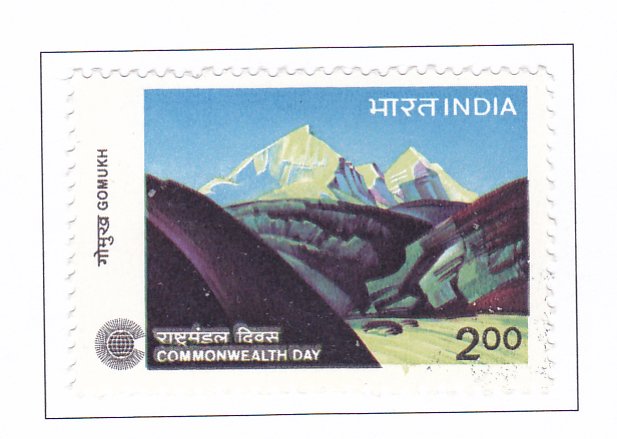Commonwealth Day : Gomukh, Gangotri Glacier

Technical Data
| Stamp Set | Commonwealth Day |
|---|---|
| Date of Issue | March 14, 1983 |
| Denomination | Rs. 2 |
| Quantity | 2,000,000 |
| Perforation | comb 13 |
| Printer | Security Printing Press, Nashik |
| Watermark | No Watermark |
| Colors | Multicolor |
| Catalog Codes |
Michel IN 947 Stamp Number IN 1014 Yvert et Tellier IN 758 Stanley Gibbons IN 1081 |
| Themes | British Commonwealth | Glaciers | Landscapes |
Commonwealth Day marks the evolution of an informal organization of nations with significant British settler populations into a more structured entity. Initially comprising countries like Canada, Australia, New Zealand, and South Africa, the Commonwealth gained definition with the Balfour Formula in 1926. This formula outlined the autonomous status of member nations within the British Empire, bound together by allegiance to the Crown and united as the British Commonwealth of Nations.
The legal framework for the Commonwealth was solidified with the Statute of Westminster in 1931, emphasizing the equality of member states and their freedom in domestic and external affairs. However, India’s independence in 1947 necessitated a change in the Commonwealth’s nature, as India, a republic, could not pledge allegiance to the Crown. Instead, India joined the Commonwealth in 1949 based on its acceptance of the King as the symbol of free association among independent member nations and as the Head of the Commonwealth. The term “British” was subsequently dropped from the Commonwealth’s name.
While the Commonwealth lacks a formal constitution, a declaration of Commonwealth principles was established in 1971, emphasizing the voluntary association of independent sovereign states and their commitment to consultation, cooperation, and the promotion of international understanding and peace.
Today, the Commonwealth comprises 47 member states, reflecting its diverse and inclusive nature. In a bid to raise awareness about the Commonwealth and support its initiatives, Commonwealth Heads of Government agreed to issue special Commonwealth stamps every five years, with the inaugural issue coinciding with Commonwealth Day on March 14, 1983. The Indian Posts and Telegraphs Department played a significant role in commemorating this occasion by issuing a set of two stamps.
